“In the long run, it may turn out that rascality is necessary to human government, and even to civilization itself–that civilization, at bottom, is nothing but a colossal swindle.”
H.L. Mencken, Notes on Democracy
Archives for 2013
TT: Snapshot
Arturo Toscanini conducts a performance of Brahms’ Liebeslieder Walzer, Op. 52, originally telecast on NBC in 1948. The pianists are Artur Balsam and Joseph Kahn:
(This is the latest in a series of arts-related videos that appear in this space each Monday and Wednesday.)
TT: Almanac
“The evidence of science and history is that humans are only ever partly and intermittently rational, but for modern humanists the solution is simple: human beings must in future be more reasonable. These enthusiasts for reason have not noticed that the idea that humans may one day be more rational requires a greater leap of faith than anything in religion.”
John Gray, The Silence of Animals: On Progress and Other Modern Myths
Sites
* = recently added
LITBLOGS
Anecdotal Evidence
Books, Inq.
Bookslut
Ed Champion
A Commonplace Blog
Elegant Variation
Ivebeenreadinglately
Light Reading
The Little Professor
The Millions
The Mumpsimus
OMNIBLOGS
Gurgling Cod
karigee
Killin’ time being lazy
Pratie Place
The Rat
Chloe Veltman
Whisky Prajer
SCREENBLOGS
Blogdanovich *
The House Next Door
Old-Time Radio Examiner
Pullquote
David Simon *
SIGHTBLOGS
Art Law Blog
Michael Barrier
Culturegrrl
Modern Art Notes
PrairieMod
Two Coats of Paint
Edward Winkleman
SOUNDBLOGS
John Amis
Stephen Hough
Iron Tongue
Ethan Iverson *
Jazz Lives
Jazz Profiles
JazzWax
On an Overgrown Path
Rifftides
Sandow
Think Denk
Villes Ville
Wonderful World of Satchmo
STAGEBLOGS
Broadway & Me
Chris Caggiano *
George Hunka *
Marissabidilla
Parabasis
Producer’s Perspective
Shenton’s View
John Simon *
The Wicked Stage
______________
ART LINKS
artsjournal.com
Arts & Letters Daily
BroadwayStars
The Page
______________
OTHER BLOGS
Alicublog
Althouse
InstaPundit
Kausfiles
Lileks
Lance Mannion
Megan McArdle
Mosaic
Overlawyered
RealClearPolitics
Via Meadia *
Volokh
______________
MEDIA
BuzzMachine
Romenesko
RADIO
Soundcheck
Studio 360
______________
USEFUL SITES
Criterion Collection
Hot Dogs
Inflation Calculator
Internet B’way DB
Internet Movie DB
Jazz on the Tube
Henry James Sites
Online Parallel Bible
OS Shakespeare
Paris Review DNA
samueljohnson.com
TT: Solo flight (I)
I flew from New York to San Francisco last Tuesday, and more than once along the way I wondered whether I should have stayed home. Not only was San Francisco International Airport still convulsed by a plane crash that had closed one of the runways, but the aircraft on which I was flying was afflicted by a broken air conditioner and a broken navigational computer. We spent more than an hour sweating on the tarmac in New York, and arrived on the West Coast four and a half hours late.
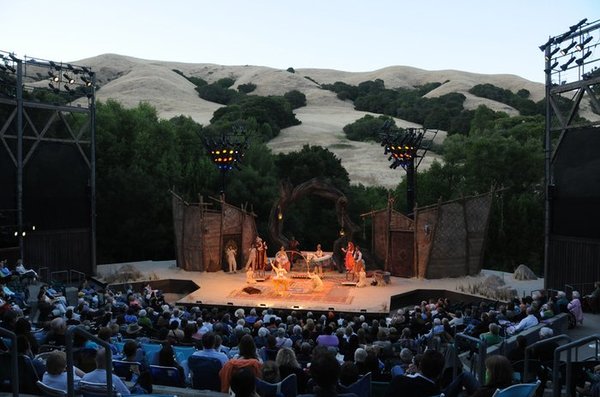 All this made me grateful–sort of–that Mrs. T decided to stay home instead of accompanying me to California and Oregon. I wouldn’t have wanted to put her through a day like that. But no sooner did I extract myself from the hotel’s hot tub and drive out to Orinda’s California Shakespeare Theater on Wednesday to see Romeo and Juliet with a friend than I forgot all about my (admittedly minor) ordeal.
All this made me grateful–sort of–that Mrs. T decided to stay home instead of accompanying me to California and Oregon. I wouldn’t have wanted to put her through a day like that. But no sooner did I extract myself from the hotel’s hot tub and drive out to Orinda’s California Shakespeare Theater on Wednesday to see Romeo and Juliet with a friend than I forgot all about my (admittedly minor) ordeal.
While outdoor theater is sometimes more of a nuisance than it’s worth, Cal Shakes, a five-hundred-forty-five-seat amphitheater located atop a hill not far from the city, is one of America’s most idyllic performing spaces. Seeing a play there can take you out of yourself faster than just about anything I know, and that’s exactly what happened to me.
Alas, I never seem to know what time it is when I’m on the West Coast, which I proved anew by forgetting that Romeo and Juliet started at seven-thirty, not eight. Being the compulsively early type, I pulled into the parking lot at seven-thirty-five, noticed at once that nobody else was doing the same thing, and hastened shamefacedly to the box office, where I discovered, entirely to my surprise, that the curtain was being held for my friend and me. We sat down and the show started at once. Sometimes it’s good to be Guffman.
I took Thursday off and went to the de Young Museum to see Richard Diebenkorn: The Berkeley Years, 1953-1966, a very important exhibition of some 130-odd paintings and drawings that, not altogether surprisingly, won’t be traveling to New York, or anywhere else other than the Palm Springs Art Museum. Diebenkorn, who died in 1993, was one of this country’s greatest painters, but his greatness has yet to be universally acknowledged, and I suspect that one reason for this failure of perception is that he was a West Coast artist who spent most of his adult life in California, at a time when New York City was universally regarded as the creative center of American art. When it comes to art, the East Coast has always had trouble taking the West Coast seriously, just as New Yorkers are reluctant to admit that theater in Chicago is at least as good as theater in Manhattan. It’s one of the many ways we have of being provincial.
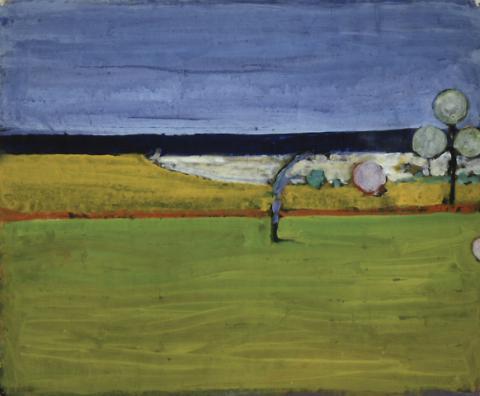 It happens that Mrs. T and I saw another first-class Diebenkorn show, “Richard Diebenkorn: The Ocean Park Years,” on our last visit to California. I wrote about it not long afterward in The Wall Street Journal. Here’s part of what I said:
It happens that Mrs. T and I saw another first-class Diebenkorn show, “Richard Diebenkorn: The Ocean Park Years,” on our last visit to California. I wrote about it not long afterward in The Wall Street Journal. Here’s part of what I said:
Mr. Diebenkorn, who died in 1993, waged a lifelong “battle” with abstraction. He started out as a gifted Abstract Expressionist painter. In 1955 he suddenly embraced representation, turning out dozens of figurative paintings that translate the language of Matisse into a wholly personal, semiabstract style. Then, in the Ocean Park series, he made a decisive return to total abstraction, in the process creating the most original works of his career.
To chart Mr. Diebenkorn’s stylistic development is to be reminded of the near-overwhelming power of the idea of abstraction in the 20th century. It was even felt by artists who, like Pierre Bonnard and Fairfield Porter, never produced an abstract painting in their lives, but were nonetheless influenced by the way in which practitioners of abstraction created what Mr. Diebenkorn called “invented landscapes,” nonobjective images that evoked the world of tangible reality while steering clear of literal representation….
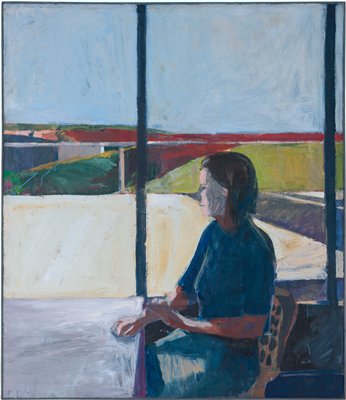 The Berkeley Years covers the second phase of Diebenkorn’s development. Most of the paintings in the show are representational, and most of the best ones are landscapes in which the human figure is either absent or secondary. Even when Diebenkorn painted a person–almost always a woman–he tended to be shy about showing her face. I wonder whether this detachment might have contributed further to the fact that he has never been as popular as he ought to be.
The Berkeley Years covers the second phase of Diebenkorn’s development. Most of the paintings in the show are representational, and most of the best ones are landscapes in which the human figure is either absent or secondary. Even when Diebenkorn painted a person–almost always a woman–he tended to be shy about showing her face. I wonder whether this detachment might have contributed further to the fact that he has never been as popular as he ought to be.
In any case, The Berkeley Years is an incredibly rich and soul-satisfying show, defective only in the decision of the curator not to hang any of Diebenkorn’s prints (he was, as Mrs. T and I have reason to know, a master printmaker). In every other way, the range and force of his prodigious output are displayed with discernment, and if you can’t get out to San Francisco or Palm Springs to see it, the superlative catalogue will give you a clear idea of what you’re missing.
![]() I love to visit San Francisco, though I don’t think I’d ever want to live there. As much as I like fog, the perpetually damp climate doesn’t suit my tastes. Neither does the city’s comfortably hip vibe. It is, I incline to think, a place rather too pleased with itself for its own good–but, then, it has much to be pleased about, above all its near-unrivaled natural beauty. I never get tired of looking at San Francisco. And a city that can boast of a museum like the de Young (though the building is better than the collection it houses) or an orchestra like Michael Tilson Thomas’ San Francisco Symphony needn’t apologize to anybody about anything, culturally speaking.
I love to visit San Francisco, though I don’t think I’d ever want to live there. As much as I like fog, the perpetually damp climate doesn’t suit my tastes. Neither does the city’s comfortably hip vibe. It is, I incline to think, a place rather too pleased with itself for its own good–but, then, it has much to be pleased about, above all its near-unrivaled natural beauty. I never get tired of looking at San Francisco. And a city that can boast of a museum like the de Young (though the building is better than the collection it houses) or an orchestra like Michael Tilson Thomas’ San Francisco Symphony needn’t apologize to anybody about anything, culturally speaking.
(First of three parts)
TT: Almanac
“To think of humans as freedom-loving, you must be ready to view nearly all of history as a mistake.”
John Gray, The Silence of Animals: On Progress and Other Modern Myths
TT: Living on line
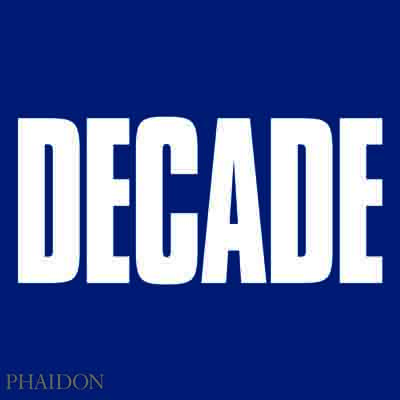 I started this blog on July 14, 2003, ten years ago. (This was the very first posting.)
I started this blog on July 14, 2003, ten years ago. (This was the very first posting.)
Back then the word “blog” was still comparatively unfamiliar to the public at large, and there were, so far as I know, fewer than a dozen blogs that dealt solely or primarily with cultural matters, none of which was written by a critic who published regularly in the national media. Now there are far more than I can count.
Many, perhaps most of the artblogs that were launched in the early years of the twenty-first century have since fallen by the wayside, but “About Last Night” is still here. I’ve posted something–if only an almanac entry–every weekday for a decade. Sometimes it’s a burden, but mostly it’s a pleasure.
I tip my hat to Laura “Our Girl” Demanski and Carrie Frye, both of whom have shared this space with me in the past, much to my delight. Of late, alas, they’ve become too busy to blog (Laura is editing a magazine and Carrie is writing a book). When and if their lives change, they’ll be welcome back, and then some.
I don’t feel like going on at length about the tenth anniversary of “About Last Night” precisely because it is still here, a fixed point on the horizon of cyberspace. I do, however, want to point you to a few of my favorite postings. Some of them are about art, others about life, most about the intersection between the two. All are personal, most very much so. In time I hope to spin them, and others like them, into a book.
For the moment, though, I invite you to look back with me over a decade of uninterrupted blogging. I hope you’ve enjoyed the ride:
• From 2003: Among the professionals and Kind of omnipresent
• From 2004: Nothing to do and A wedding
• From 2005: Time off for good behavior
• From 2006: In a strange land
• From 2007: Among the clouds and Sursum corda
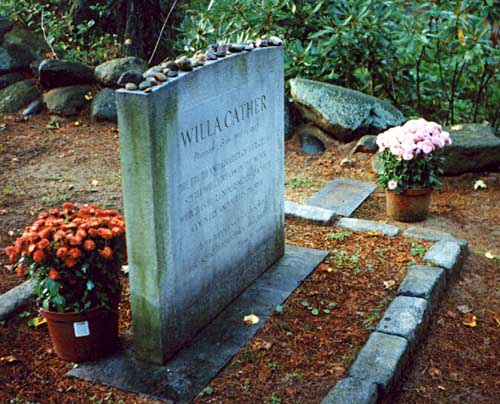 • From 2008: Sacred to the memory
• From 2008: Sacred to the memory
• From 2009: I shook hands with Piney Brown and How it felt
• From 2010: Lucky man and Night thoughts on Jack Benny
• From 2011: One is a wanderer and Time present and time past
• From 2012: Home from the sea and Beloved that pilgrimage
• From 2013: Blossoms in the breeze
TT: Just because
A complete performance of the original version of George Balanchine’s Apollo, originally telecast on the CBC in 1960. The score is by Igor Stravinsky. The principal dancers are Jacques d’Amboise as Apollo, Jillana as Calliope, Francia Russell as Polyhymnia, and Diana Adams as Terpsichore:
(This is the latest in a series of arts-related videos that appear in this space each Monday and Wednesday.)
